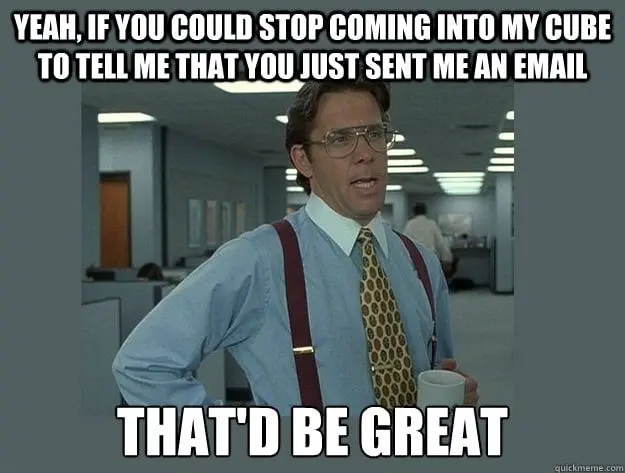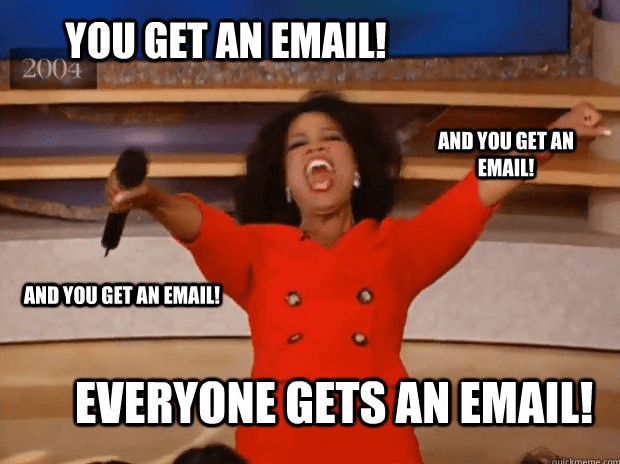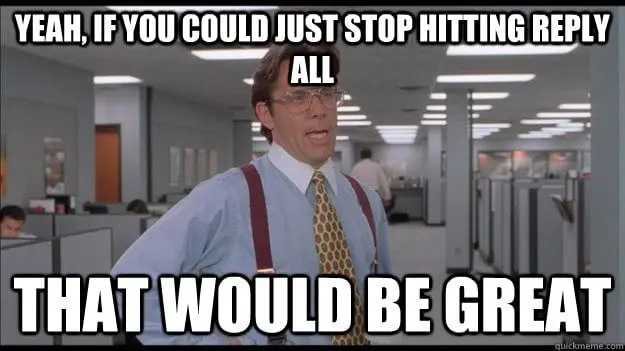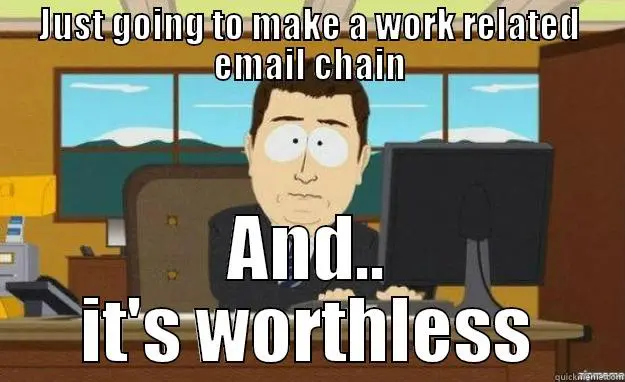We know men are from Mars and women are from Venus, but that’s no excuse for emails that seem like they’re coming from outer space and no, emails aren’t dead (yet), so here’s how to nail the e-communication.
Interoffice communications via email shouldn’t be as hard as solving a Rubik’s cube; the best way to get people to start communicating better is to lead by example.
Try implementing these rules and hope the rest of your team starts copying you.
1. Don’t reply to everything

This sounds counterintuitive but you really don’t have to reply ‘Thanks’, ‘Got it’ or ‘Let me get back to you on that’ to every email.
When you’re asked a question feel free not to answer until you know the reply.
If it is a simple FYI just consider yourself informed.
2. Don’t email everything (keep a list)

It is extremely easy to email every brain fart you produce to everybody on the team. Don’t abuse this power. Email with moderation.
Keep a list of names in your notes app and collect questions under every name.
The next time you speak to the person, ask 10 questions at a time. You can even collect these questions over the week, and can send them all at once in one email.
3. Do an email-handshake first
Before you start emailing people, take a few minutes to talk about how they want to receive email.
The answers might surprise you.
Some people like emails long and detailed and with all the info in one message, while others prefer shorter and more frequent emails with one email per subject. Stuff like that really matter.
And of course, forward them this post first.
4. Shorter is better

Keep messages short and sweet. We understand you are a very talented writer, but if your email requires us to scroll we will file it in our to-do folder for later, ahem, analysis.
Think of it this way: with every sentence you add there is an extra 5 per cent chance we won’t read and reply right away. 20 sentences and you might as well never send it at all.
5. Is email the best medium for this question?
We all love email and it really is many people’s preferred medium of choice.
But some subjects are better discussed over the phone, or a meeting. Is your question extremely short? Maybe try a text message.
About 50 percent of emails would be better off in a Skype chat window, wouldn’t you agree?
6. Keep emotions out of it

Are you angry? Is there a good chance that the person who will receive this email will get angry? Then don’t send the email.
If a message is going to provoke an emotional reaction or some lengthy discussion, it’s worth setting up a call or meeting instead.
7. Don’t email documents
It is very cool that you can attach documents to emails. You can attach vCards, funny images and screenshots and you won’t hear many complain about.
But for documents like presentations, spreadsheets or really any other file that needs to be collaborated on, this really isn’t the right medium.
If you work on something together give Google Drive a try. If you’re stuck with Office or iWorks use Dropbox to set up shared folders. Even screenshots are really better handled with Droplr or Skitch.
8. Only CC with a reason

When you CC, specifically mention what you are CCing people for. Don’t you often find yourself going through a huge thread wondering why the hell you’re CCd and trying to find out what you’re supposed to reply to?
It really should be a rule that if you CC someone, you are required to add a line of text for each person you CC explaining why. Something like this:
-Jonathan: Just a FYI, no reply needed
-Shannon: Paragraph 2 (‘the form’) is for you. Please submit it.
-Peter: Can you answer question 1 and 3 (only reply to Kristin!)
9. BCC is a great gift
One of the best things you can read in an email is ‘I’m moving you to BCC now’. That means you’re considered informed, but no longer necessary for the, no doubt, lengthy email thread that is about to follow.
It will provide about as much joy as when your boss tells you to ‘take the rest of the day off’. Try to make a habit out of moving as many people to the BCC field as possible when you get an email with a lot of names in it.
10. Don’t email at all
A lot of people start their day in their Inbox. You might feel useful and productive cleaning your inbox and sending out a lot of emails, but that might not really be the case at all.
You are creating work for others and it might be better to think about what you are working on first. Remember, 20 years ago email didn’t even exist, and people did business just fine.
Conclusion
Email is a great communication tool, but it’s often abused too. As with any tool though, with a little thought you can use it well and get the most out of it.





